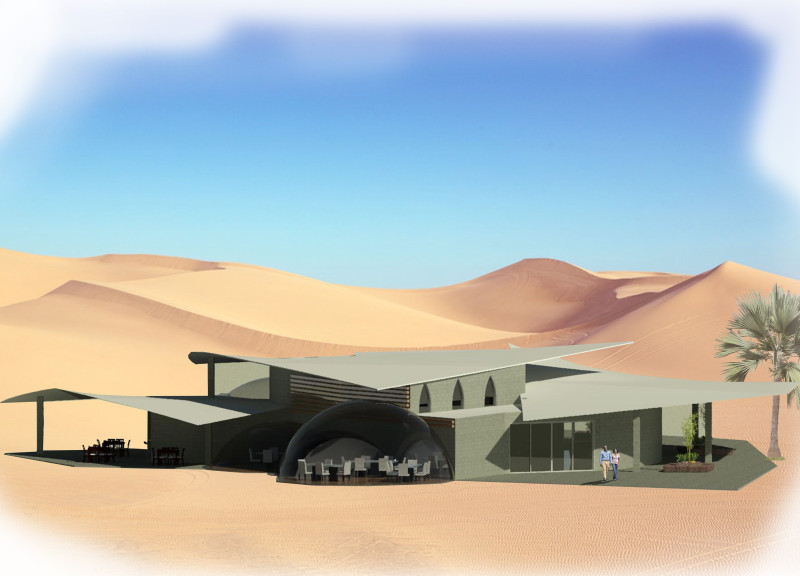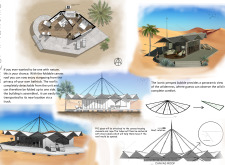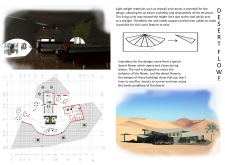5 key facts about this project
At its core, this architecture is designed to accommodate the needs of its users while also fostering connections among them. With an emphasis on openness and interaction, the layout encourages social engagement and collaboration. The layout consists of well-defined spaces that cater to both private and communal gatherings, showcasing an understanding of the importance of human interaction in architectural design. Thoughtful circulation paths connect different areas, ensuring that movement through the structure feels intuitive and seamless.
One notable feature of the project is its integration with the surrounding natural landscape. The architects have carefully considered the site, utilizing existing topographical elements to enhance the overall design and create visually appealing vistas. Large windows and strategically placed openings allow natural light to flood the interiors while providing inhabitants with unobstructed views of the outdoor surroundings. As a result, the architecture establishes a dialogue between the indoor and outdoor environments, inviting inhabitants to engage with nature.
In terms of materiality, this project showcases a diverse palette that reflects its contextual relevance. The use of locally sourced materials reinforces a sense of place, connecting the building to its environment and minimizing transportation-related carbon emissions. Concrete offers structural strength while providing a modern aesthetic, while warm-toned wood accents introduce a welcoming touch, creating a balance between the sleek and the natural. The strategic application of glass not only enhances transparency but also contributes to the building’s energy efficiency by maximizing passive solar gain.
Sustainability is a fundamental component of the architectural design, as evidenced by various environmentally conscious strategies employed throughout the project. The architects have incorporated passive design principles to optimize thermal performance and comfort. Rainwater harvesting systems alongside green roof elements promote biodiversity while serving practical functions such as rainwater management and insulation. These features not only reduce the building's ecological footprint but also demonstrate a commitment to responsible stewardship of resources.
What sets this architectural project apart is its ability to transcend mere functionality. It strives to be more than just a space; it aims to act as a catalyst for community interaction and environmental awareness. Innovative approaches to design challenge conventional norms by integrating art, technology, and natural elements. The project embraces contemporary architectural ideas, moving beyond traditional forms to explore how buildings can enrich the lives of their users and the environment.
Through its careful blend of thoughtful design and sustainable practices, this project represents a forward-thinking approach to architecture. It illustrates how contemporary design can thoughtfully engage with its context while addressing the needs of its users. For readers interested in delving deeper into the intricacies of this project, exploring the architectural plans, sections, and designs will provide a more nuanced understanding of the underlying ideas and design decisions that shaped this innovative architectural endeavor. Engaging with these elements will enhance appreciation for the architecture's intent and functionality, showcasing the potential within contemporary design to create meaningful spaces that resonate with their environments and users.


























